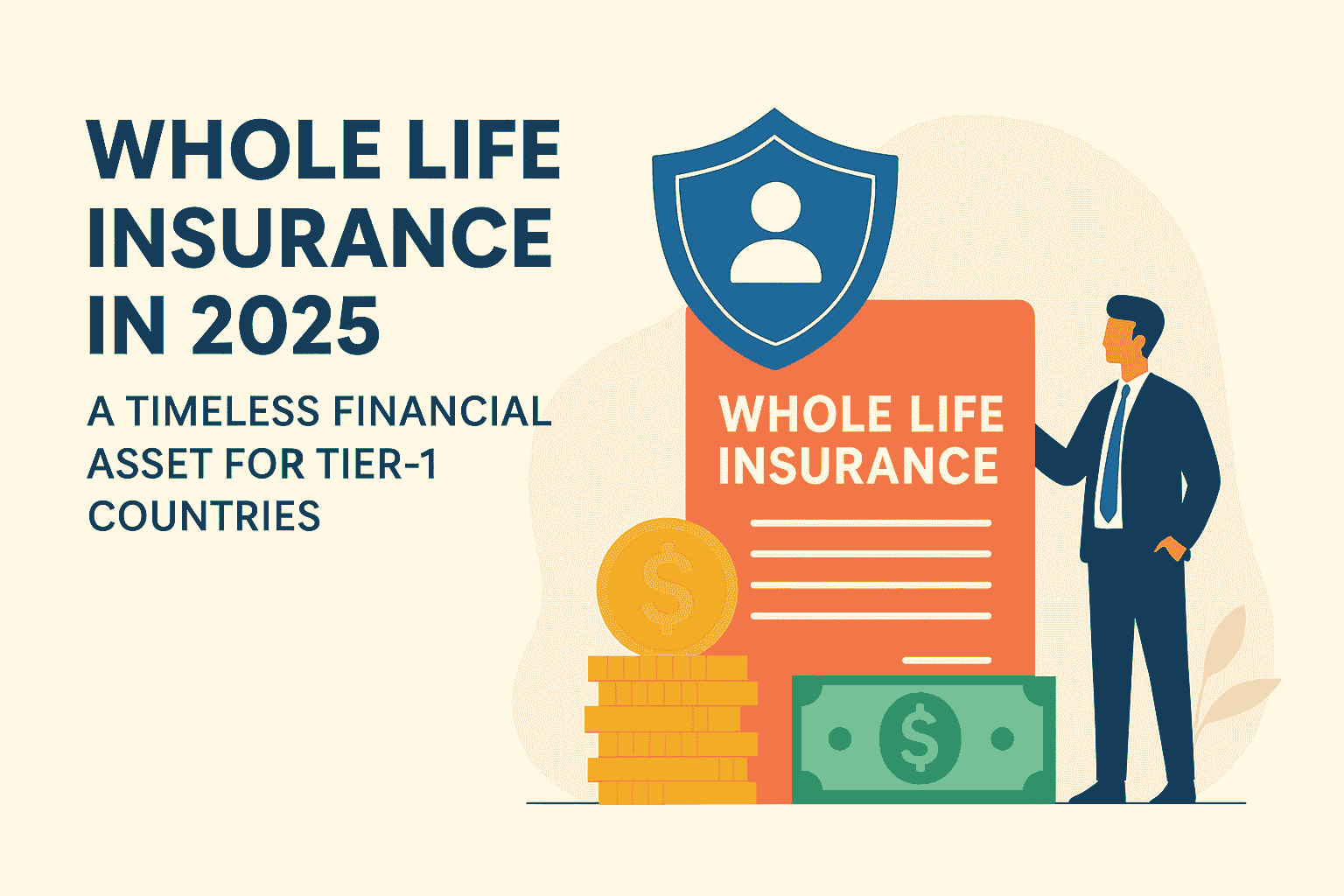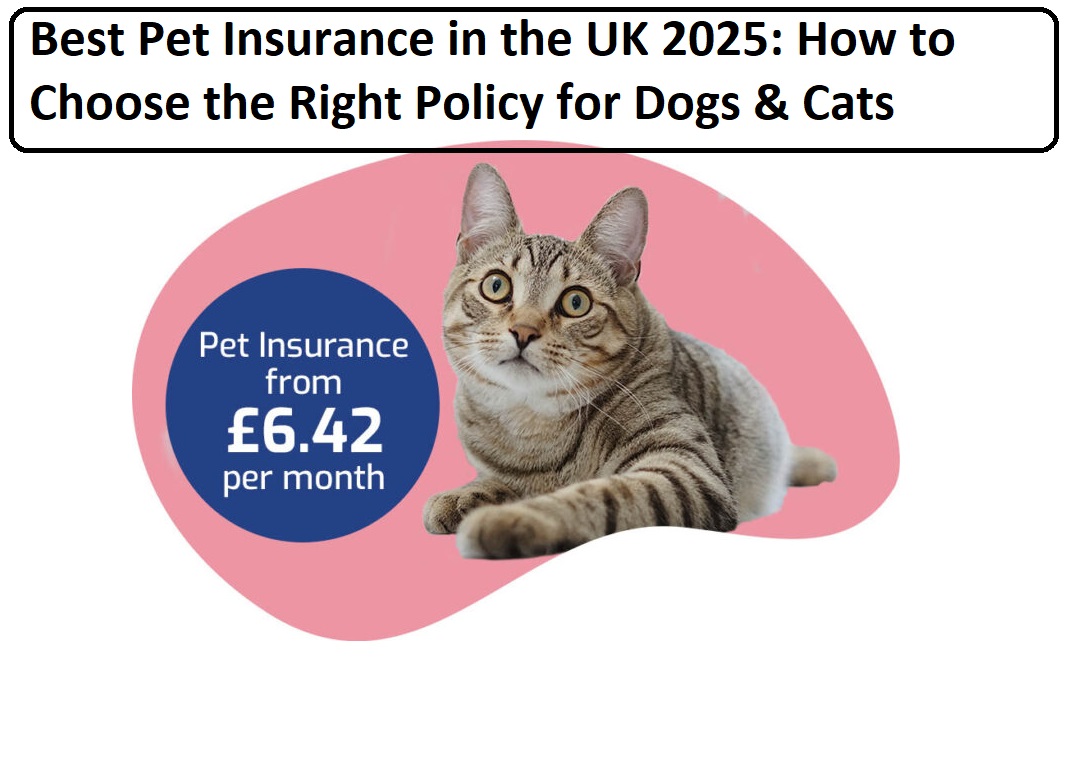Why Whole Life Insurance Is a Must-Have Financial Tool in Today’s Economy: Lifetime Coverage, Cash Value, and Wealth Building Benefits
How Whole Life Insurance Secures Your Financial Future
In today’s volatile economic climate—marked by rising inflation, low interest rates, and demographic shifts—whole life insurance has gained renewed relevance. As families and individuals in Tier-1 countries seek financial stability and long-term planning tools, whole life insurance stands out for its dual utility: lifetime coverage and an embedded cash value component. With growing awareness of retirement gaps and estate planning needs, this policy offers not just peace of mind but strategic wealth-building advantages.
Within the first 100 words, we’ve naturally included high-impact SEO keywords such as whole life insurance, permanent life insurance, cash value, and life insurance policy, which align with search trends in mature markets.
- Whole life insurance provides lifetime coverage combined with a cash value component, making it a versatile tool for financial stability and long-term wealth building in volatile economic conditions.
- Increasing awareness of retirement gaps and estate planning needs in Tier-1 countries highlights whole life insurance as a strategic solution for peace of mind and sustainable financial planning.

Whole Life Insurance Explained: Permanent Protection, Growing Cash Value
Whole life insurance, also known as permanent life insurance, provides lifelong protection along with a cash value component that grows over time. Premiums are typically fixed, and a portion of each payment builds guaranteed cash value, which policyholders can borrow against or withdraw. Some policies also pay dividends, depending on the insurer’s performance and policy terms, offering a potential additional return on your investment.
Key Features and Benefits
- Fixed and Predictable Premiums: The premium is set at the time of purchase and never increases, making it easy to budget for the long term. This stability is a major advantage for financial planning.
- Tax-Advantaged Growth: The cash value grows on a tax-deferred basis, meaning you won’t pay taxes on the growth as it happens. Additionally, the death benefit paid to beneficiaries is generally income tax-free, providing a significant financial safety net for your loved ones.
- A Financial Tool Beyond a Death Benefit: You can use the accumulated cash value as an asset. Policyholders can take out policy loans against the cash value to fund emergencies, education, or other financial needs without a credit check, or they can use it as a source of retirement income.
- Guaranteed Death Benefit: Unlike term policies that expire, a whole life policy guarantees a payout to your beneficiaries regardless of when you pass away, provided the premiums are paid.
How Whole Life Insurance Works vs. Term Life Insurance
Comparison at a Glance:
| Feature | Whole Life Insurance | Term Life Insurance |
|---|---|---|
| Coverage Duration | Lifetime | Specific term (e.g., 10–30 years) |
| Premiums | Fixed for life | Generally lower initially |
| Cash Value | Yes—grows over time, accessible | No |
| Investment Risk | None—steady growth | N/A |
| Cost | Higher long-term expense | Lower short-term cost |
Whole life ensures a guaranteed death benefit and cash value growth at fixed returns, whereas term life is more affordable and straightforward but lacks savings features InvestopediaNerdWallet.

Benefits of Whole Life Insurance.
Whole life insurance offers several key benefits that make it a valuable financial tool for long-term security. One of the primary advantages is lifetime protection, which guarantees a death benefit as long as premiums are consistently paid. This assurance provides peace of mind to policyholders, knowing their loved ones will receive financial support regardless of when the insured passes away. Additionally, whole life insurance includes a cash value accumulation feature, functioning as a low-risk savings component with guaranteed steady growth. This cash value grows over time, allowing policyholders to potentially borrow against it or use it to supplement retirement income. Another important benefit is the fixed premiums, which make budgeting easier as the cost remains predictable and budget-friendly throughout the duration of the policy.
- Lifetime Protection: Guarantees a death benefit, as long as premiums are paid Investopedia.
- Cash Value Accumulation: Provides a low-risk savings component with guaranteed steady growth Investopedia.
- Fixed Premiums: Budget-friendly over the long term due to predictable costs Investopedia.
- Forced Savings & Estate Planning: Useful for heirs to settle estate taxes; particularly valuable in jurisdictions with high estate thresholds (e.g., US in 2025 estate exemption around $13.9 million) NerdWallet.
- Financial Security: Helps families maintain financial stability, pay taxes, or service debts post-mortem.
Beyond cash value and lifetime coverage, whole life insurance serves essential roles in forced savings and estate planning. The policy’s cash value component acts as forced savings, encouraging disciplined financial planning. Moreover, whole life insurance is particularly useful for heirs to settle estate taxes, especially in countries like the United States where the 2025 estate tax exemption is around $13.9 million. This can ease the financial burden on beneficiaries by providing liquid assets to cover estate taxes and other expenses, ensuring smoother wealth transfer. Overall, whole life insurance contributes to financial security by helping families maintain stability, cover debts, and pay taxes after the policyholder’s death, making it a comprehensive financial safety net
Whole Life vs. Term Life: Understanding the High Premiums and Low Returns
Whole life insurance has its downsides, and they’re worth knowing. First off, it’s a lot more expensive than term life insurance. A 40-year-old man might pay around $6,400 a year for a $500,000 whole life policy, while a similar term policy could cost as little as $334 annually. Another point to consider is the low rate of return. The cash value typically grows at a modest 1–3.5% annually, which is often much lower than what you could potentially earn in the stock market or other investments. The policy also offers limited flexibility. Its fixed premiums and death benefit can make it less adaptable than other options, like universal life insurance. Finally, there’s the opportunity cost—the money you put into whole life premiums could potentially earn a higher return if invested elsewhere, such as in mutual funds or retirement accounts.
- High Premium Cost: Significantly more expensive than term life—e.g., a 40-year-old man might pay ~$6,400/year for $500,000 whole life, vs. ~$334/year for term life NerdWallet.
- Low Rate of Return: Cash value typically grows at 1–3.5% annually—lower than potential market investments NerdWallet.
- Limited Flexibility: Fixed premiums and death benefit offer less adaptability compared to universal life options Investopedia.
- Opportunity Cost: Money allocated to premiums could potentially earn more elsewhere—investors may find greater returns in mutual funds or retirement accounts NerdWallet.

Whole Life Insurance: Benefits, Coverage, and Why It’s a Smart Financial Choice
Whole life insurance is an excellent option for individuals who need lifetime coverage, particularly parents of dependents with disabilities. These individuals often seek a stable legacy to ensure long-term financial security while also preserving access to government benefits, as highlighted by sources like NerdWallet. This type of insurance provides peace of mind by offering consistent support for those who rely on it.
For those concerned about estate liquidity, whole life insurance is a practical choice. It ensures that beneficiaries have access to funds to cover potential taxes or legal fees, making it easier to settle an estate without financial strain. This feature is especially valuable for individuals planning for the efficient transfer of their assets.
Additionally, whole life insurance suits people who prefer low-risk savings within the framework of an insurance policy. By combining coverage with a savings component, it offers a conservative approach to building wealth over time, appealing to those who prioritize financial stability.
Finally, whole life insurance is ideal for buyers seeking financial discipline. The policy’s structure encourages regular premium payments, fostering an enforced savings mindset. This helps policyholders consistently contribute to the policy’s cash value, supporting long-term financial planning and discipline.
- Those needing lifetime coverage—such as parents of dependents with disabilities, who require a stable legacy and to preserve government benefits NerdWallet.
- Individuals concerned about estate liquidity, especially where beneficiaries may face taxes or legal fees.
- People preferring low-risk savings within an insurance policy structure.
- Buyers seeking financial discipline, benefiting from the enforced savings mindset it instills.
Choosing a Provider—What to Look For
Select insurers based on:
- Financial Strength: Ratings from AM Best, NAIC, J.D. Power.
- Policy Features: Availability of riders, dividend history, conversion options.
- Customer Satisfaction: Claims processing and service quality.
- Online Transparency: Ease of quoting and policy management
Tools like Investopedia compile data on such parameters for comprehensive evaluation
What exactly does whole life insurance mean?
Whole life insurance is a type of permanent life insurance that provides lifelong coverage. It includes a guaranteed death benefit and a cash value component that grows at a guaranteed rate over time.
How much does a $100,000 whole life insurance policy cost?
The cost varies significantly based on age, health, and gender. For a healthy 30-year-old, a $100,000 policy might cost around $100-$150 per month, while a 50-year-old could pay over $250 a month.
What is the difference between whole life and endowment insurance?
Whole life insurance provides a death benefit for life and builds cash value. Endowment insurance is designed to pay a lump sum to the policyholder after a specific period (e.g., 20 years) or to beneficiaries if the policyholder dies within that period.
What is an example of a whole life insurance policy?
An example is a policy that guarantees a $500,000 death benefit for life. Part of each premium goes toward the death benefit, and another part goes into a cash value account that grows steadily.
What is the disadvantage of whole life insurance?
The primary disadvantage is its high cost compared to term life insurance. It also offers a lower rate of return on the cash value than most market investments.
What is the age limit for whole life insurance?
While there’s no strict limit, most insurers won’t issue a new whole life policy to individuals over the age of 85. The cost becomes prohibitively expensive at older ages.
How much a month is a $500,000 whole life insurance policy?
The cost is highly dependent on individual factors. For a healthy 30-year-old, it could be $350-$450 per month, whereas a 50-year-old could pay well over $1,000 a month.
What are the three main types of whole life insurance?
The three main types are:
- Non-participating: Offers a guaranteed cash value and death benefit without dividends.
- Participating: Pays dividends to policyholders, which can be used to increase the death benefit, reduce premiums, or be paid in cash.
- Limited Payment: Allows you to pay off the policy in a set number of years (e.g., 10 or 20 years) or by a certain age.
How much is whole life insurance for a 40-year-old?
For a healthy 40-year-old, a $500,000 policy could cost roughly $450-$650 per month, though this varies greatly by insurer and individual health.
How long do you pay whole life insurance?
You typically pay premiums for your entire life, though there are “limited payment” policies that are fully paid after a set number of years.
Why is whole life so expensive?
It’s expensive because it provides lifelong coverage and includes a cash value component that is guaranteed to grow. The insurer assumes more risk and must guarantee a return, which is priced into the premium.
Who needs whole life insurance?
It is suitable for those who want a guaranteed death benefit for life, wish to use it as a tool for estate planning, or seek a low-risk, tax-advantaged savings vehicle.
What are the five types of life insurance?
The five main types are:
- Term Life
- Whole Life
- Universal Life
- Variable Life
- Indexed Universal Life
What are the rules of whole life insurance?
The main rules are that premiums are fixed, the death benefit is guaranteed for life (as long as premiums are paid), and the cash value grows at a fixed rate, which can be borrowed against or withdrawn.
What is another name for whole life insurance?
Another common name is permanent life insurance.
At what age does term life insurance end?
Term life insurance ends at the conclusion of the specified term, which can be 10, 20, 30 years, or up to a specific age, like 95.
What are the negatives of life insurance?
The negatives include the cost of premiums, the possibility of outliving a term policy, and the low rate of return on cash value for permanent policies compared to other investments.
What is the disadvantage of whole life?
The key disadvantages are high premiums, a low rate of return on the cash value, and lack of flexibility.
Can I cash out my whole life insurance policy?
Yes, you can surrender your policy and receive the cash surrender value, which is the cash value minus any fees. However, this means you will lose the death benefit.
Why do rich people buy whole life insurance?
Wealthy individuals use it for its tax advantages, as a tool for estate planning to pass on assets tax-free, and as a low-risk asset class that diversifies their portfolio.
How to make money with whole life insurance?
You “make money” by growing the cash value on a tax-deferred basis, accessing it through tax-free policy loans, and using the dividends (in participating policies) to increase the death benefit or cash value.
Who offers the best whole life insurance?
The “best” provider depends on your individual needs. Leading companies known for financial strength and competitive policies include Guardian, MassMutual, and New York Life.
How much is whole life insurance for a 55-year-old?
For a healthy 55-year-old, a $250,000 policy could cost around $600-$900 per month, while a $500,000 policy could easily exceed $1,200 per month.
What age is too late to get life insurance?
While you can get a policy in your 70s or 80s, the premiums become extremely high, making it financially difficult for most. For practical purposes, it’s often too late if the cost outweighs the benefit.
What are the three main types of life insurance?
The three main types are term life, whole life, and universal life.
What happens after 30 years of term life insurance?
After 30 years, the term policy expires. The death benefit is no longer in effect, and you do not get any money back.
What is the biggest risk for whole life insurance?
The biggest risk is the opportunity cost. The money spent on high premiums could potentially earn a much higher return if invested in other assets like a retirement account or the stock market.
How many years is a whole life?
A whole life policy is designed to last for your entire life, provided premiums are paid.
What happens if I stop paying whole life insurance?
The policy may lapse, meaning the coverage ends. However, you can use the accumulated cash value to pay the premiums (known as a “policy loan”) or you can surrender the policy for its cash value.
Which insurance do rich people use?
Rich people often use permanent policies like whole life and universal life insurance for estate planning, wealth transfer, and their tax-advantaged cash value components.
Does money grow in life insurance?
Yes, in permanent life insurance policies (like whole life and universal life), the cash value component grows over time on a tax-deferred basis.
How to withdraw money from a life insurance policy?
You can withdraw money by taking a policy loan against the cash value or by making a partial withdrawal. You can also surrender the policy entirely to receive the cash surrender value.
What is the other name for whole life insurance?
The other common name is permanent life insurance.
Which life insurance is best?
The “best” type depends on your individual needs. Term life is best for temporary needs and affordability, while whole life is best for lifelong coverage and guaranteed cash value growth.
Which is better, term life or whole life insurance?
This depends on your goals. Term life is better if you need a large amount of coverage for a specific period at the lowest cost. Whole life is better if you want a guaranteed death benefit for life and a tax-advantaged savings component.
At what age should you stop term life insurance?
It depends on your financial situation. Many people stop term insurance once they are financially independent, their kids are grown, and their debts (like a mortgage) are paid off.
What type of life insurance is best?
The best type is a personal choice based on your financial goals, budget, and family needs.
Do you get your money back after term life insurance?
No, in most cases, you do not get your money back. The premiums you pay for term life are a cost for the coverage, similar to auto or home insurance.
Why are millionaires buying life insurance?
Millionaires use life insurance as a sophisticated financial tool for tax-efficient wealth transfer, estate planning, and a safe, low-risk asset class that diversifies their portfolios.
Which private health insurance is best?
Determining the “best” private health insurance is highly subjective and depends on your specific needs, location, and budget. What’s best for one person may not be for another. It’s crucial to compare different plans from various providers based on factors like:
- Coverage: Does it cover what you need (e.g., hospitalization, maternity, dental)?
- Premiums and Deductibles: How much will you pay monthly and out-of-pocket?
- Network: Are your preferred doctors and hospitals in-network?
- Reputation: Does the insurer have good reviews for customer service and claims processing?
How does whole life insurance build wealth?
It builds wealth in a few ways:
- Guaranteed Cash Value Growth: The cash value grows steadily and predictably over time, acting as a secure savings vehicle.
- Tax-Deferred Growth: The growth is not taxed until you withdraw it, allowing it to compound faster.
- Policy Loans: You can borrow against the cash value for any purpose without triggering a taxable event, and the money you borrowed continues to earn interest.
- Tax-Free Death Benefit: The policy ensures a tax-free transfer of wealth to your beneficiaries.
Which insurance gives the highest returns?
Generally, investments outside of insurance, such as stocks, mutual funds, or real estate, offer the potential for the highest returns. Among life insurance products, variable life insurance has the potential for higher returns because the cash value is invested in the market, but it also carries significant risk.
What’s better than life insurance?
There isn’t a single thing “better” than life insurance, as its purpose is unique. It’s a risk management tool that provides a financial safety net for your family in the event of your death. Other financial products, like a savings account or investment portfolio, serve different purposes (e.g., short-term savings or growth) but do not replace the death benefit.
What is 1 crore term insurance?
A “1 crore term insurance” refers to a term life insurance policy with a sum assured (death benefit) of 1 crore Indian Rupees ($120,000 USD approx.). The policy provides this coverage for a specific term (e.g., 20 or 30 years) at a fixed, affordable premium.



